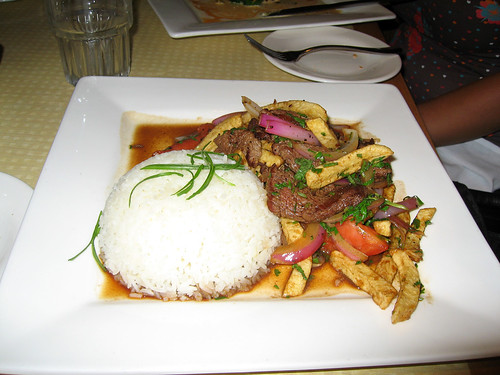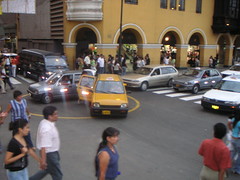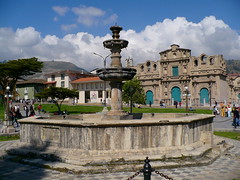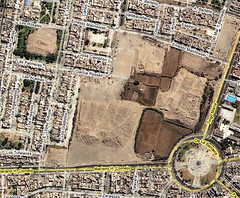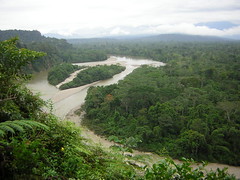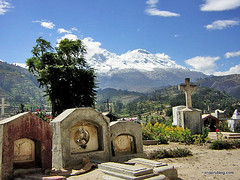Eating in Lima – What not to miss – China-Influenced
Part four- China-Influenced
Peruvian food was all but unknown to the world a decade ago, but this has begun to change in recent years. In 2004 an article appeared in The Economist. “Peru can lay claim to one of the world’s dozen or so great cuisines“. As the news spread of the discovery of one of the world’s best kept secrets, the excitement began to build. In 2006 at the Madrid Fusion Fourth International Summit of Gastronomy, one of the field’s most important conferences, top chefs, critics and journalists were blown away. The rumours were true, and the city of Lima, where many of the nation’s 400+ national and regional dishes can be found in cheap local haunts and fancy restaurants alike, was declared the Gastronomic Capital of the Americas.
——————–
China-Influenced
A boom in Chinese immigration to the Peruvian coast in the 1800s brought with it a new style of cooking and new flavours. Though this meant importing some traditional ingredients, in the majority of cases Chinese families and new Chinese restaurant owners had to make do with local ingredients. This fusion of two culinary worlds created Peru’s famous chifa, the name by which Peruvians call Chinese food.
One of these great fusion creations isn’t even sold in most Chifa restaurants and is now considered more of a creole meal. Strips of beef steak are stir-fried with fried potato, onions, tomato and ají amarillo then flavoured with a little soy sauce, garlic and cilantro to make Lomo Saltado. Although it is served Chinese-style with rice on the side, it is interesting to see how a Chinese stir fry makes use of Peruvian potatoes. If this is not sold at your local Chifa, it will be found at any creole restaurant.
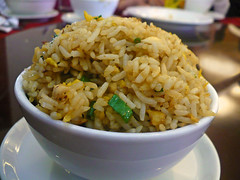
Arroz Chaufa
Chinese food has conquered Peru as it has most of the rest of the world. You can find a Chifa restaurant on every street and chifa is one of Peru’s most popular meals. It is also very affordable for most families, with simple Arroz Chaufa – stir fried rice mixed with chicken or pork meat and vegetables – can be had in the cheapest simplest low-end restaurants for just over $1 US.
But Chifa isn’t just a low-end affair. Classier restaurants exist that attract wealthier locals and tourists alike, Wa Lok, found in Chinatown and Miraflores, is an excellent example. But whether high-end or low-end, all Chifa restaurants serve Inca Kola with their meals.
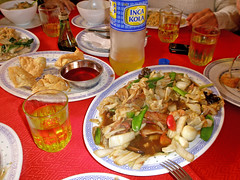
Inca Kola with Chifa
The bubble-gum tasting soda is actually Hierba Luisa flavoured, a herb native to South America that is often used in teas, and was of all people, created by British immigrants to Peru. How this soft drink managed to knock Coca Cola off the top spot or how it managed to associate itself with all things Peruvian including Chifa is down to great marketing. Eating Chifa is just not done without a bottle of Inca Kola on the table.
Whether you pay $20 or $3 for your Chifa meal, the food will probably be just as delicious- it’s your surroundings that normally change. Chifa is not generally expensive – in fact, it is almost always the cheapest option. Try some Peruvian Chinese food at the following restaurants:
Wa Lok – Jr. Paruro 864-878, Cercado de Lima (Chinatown/Calle Capón area)
Wa Lok II – Av. Angamos 700, Miraflores
Chifa El Jade – Av. José Galvez Barrenechea 579, San Isidro
Chifa Kuo Wha – Av. Paseo de la Republica 5046, Miraflores
Chifa Choy Toc – Av. Benavides, Surco
Chifa Nuevo Mundo – Av. Benavides, Surco
Or almost anywhere else!
——————–
What not to miss:
Seefood Heaven | Creole Classics | Afro-Peruvian | Fast Food | Desserts | Non-Limeño
Tags: arroz chaufa, chifa, chinatown, chinese, eating in lima, hierba luisa, inca kola, lima, lomo saltado, Wa Lok


